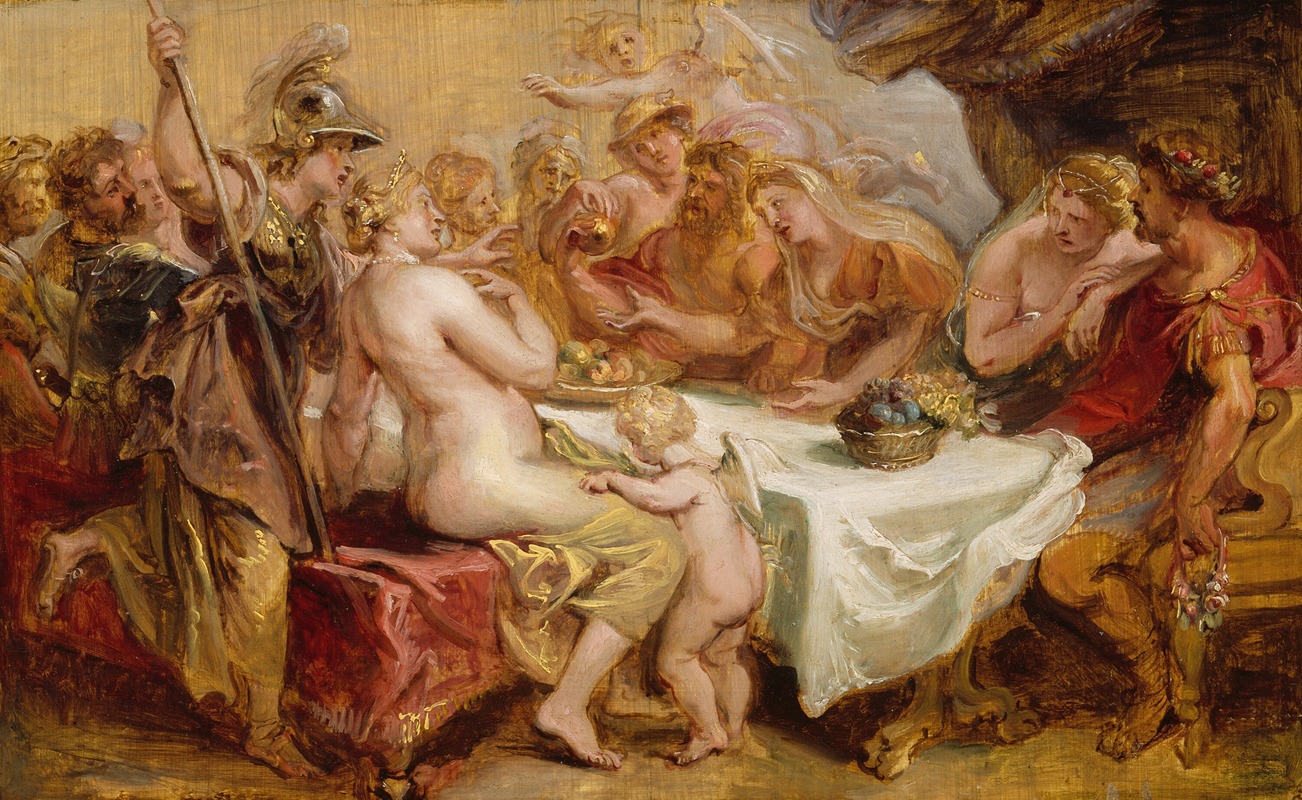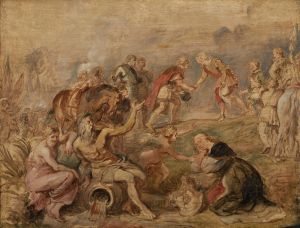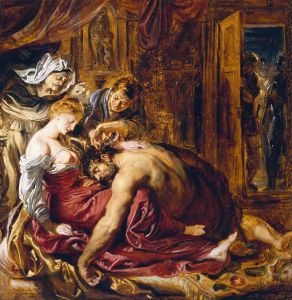
The Wedding of Peleus and Thetis
A hand-painted replica of Peter Paul Rubens’s masterpiece The Wedding of Peleus and Thetis, meticulously crafted by professional artists to capture the true essence of the original. Each piece is created with museum-quality canvas and rare mineral pigments, carefully painted by experienced artists with delicate brushstrokes and rich, layered colors to perfectly recreate the texture of the original artwork. Unlike machine-printed reproductions, this hand-painted version brings the painting to life, infused with the artist’s emotions and skill in every stroke. Whether for personal collection or home decoration, it instantly elevates the artistic atmosphere of any space.
Peter Paul Rubens, a prominent Flemish Baroque painter, created "The Wedding of Peleus and Thetis" as part of his extensive body of mythological works. This painting depicts the mythological wedding feast of Peleus, a mortal, and Thetis, a sea nymph, an event from Greek mythology that is famously associated with the origins of the Trojan War. The work is notable for its dynamic composition, vibrant color palette, and the artist's masterful ability to convey movement and emotion.
The painting portrays a lavish banquet attended by gods, goddesses, and other mythological figures. Rubens captures the grandeur and drama of the scene, emphasizing the divine nature of the event. The figures are depicted in a variety of poses, showcasing Rubens' skill in rendering the human form with anatomical precision and expressive gestures. The composition is rich with symbolic details, reflecting the artist's deep knowledge of classical mythology and his ability to translate these stories into visual form.
Rubens was known for his ability to synthesize influences from the Italian Renaissance and Baroque traditions, and this work exemplifies his mastery of these styles. The painting demonstrates his use of chiaroscuro to create depth and his characteristic use of warm, glowing colors to enhance the sense of opulence and festivity. The inclusion of numerous figures in a complex, yet harmonious arrangement is a hallmark of Rubens' work, showcasing his ability to manage intricate compositions without sacrificing clarity or impact.
The mythological subject matter of "The Wedding of Peleus and Thetis" was a popular theme in European art during the Baroque period, as it allowed artists to explore themes of love, conflict, and divine intervention. Rubens' interpretation of the scene is both celebratory and foreboding, as the wedding feast is also the setting for the fateful moment when Eris, the goddess of discord, introduces the golden apple that ultimately leads to the Trojan War.
While the exact date of the painting's creation is not definitively known, it is consistent with Rubens' mature style, which he developed during the early 17th century. The work is housed in the Museo del Prado in Madrid, Spain, where it remains an important example of Rubens' mythological oeuvre and a testament to his artistic genius.
This painting is a significant representation of Rubens' ability to merge classical themes with the dynamic energy and emotional intensity characteristic of the Baroque period. It continues to be celebrated for its artistic and historical value, offering insight into both the mythology it depicts and the cultural context in which it was created.












